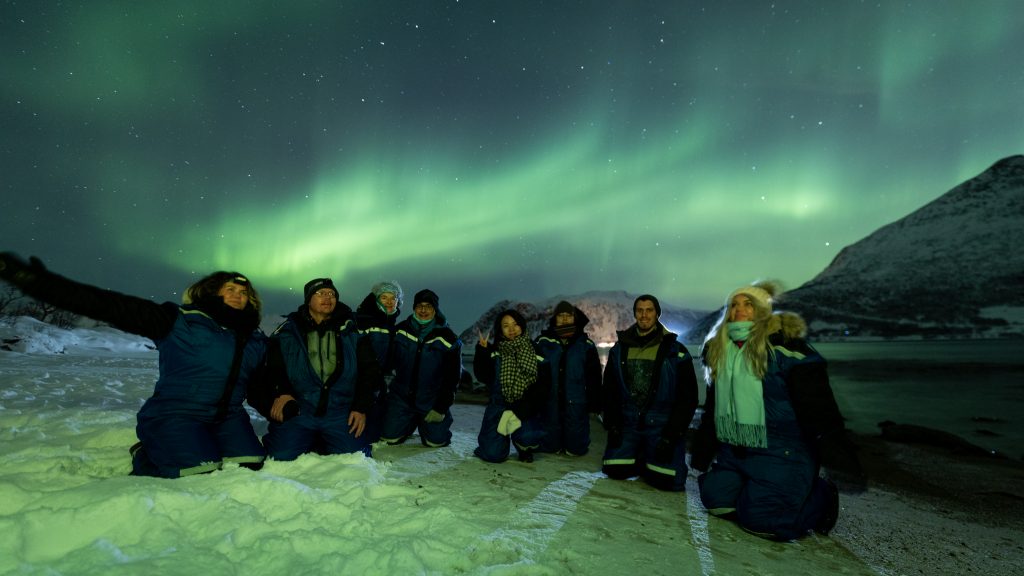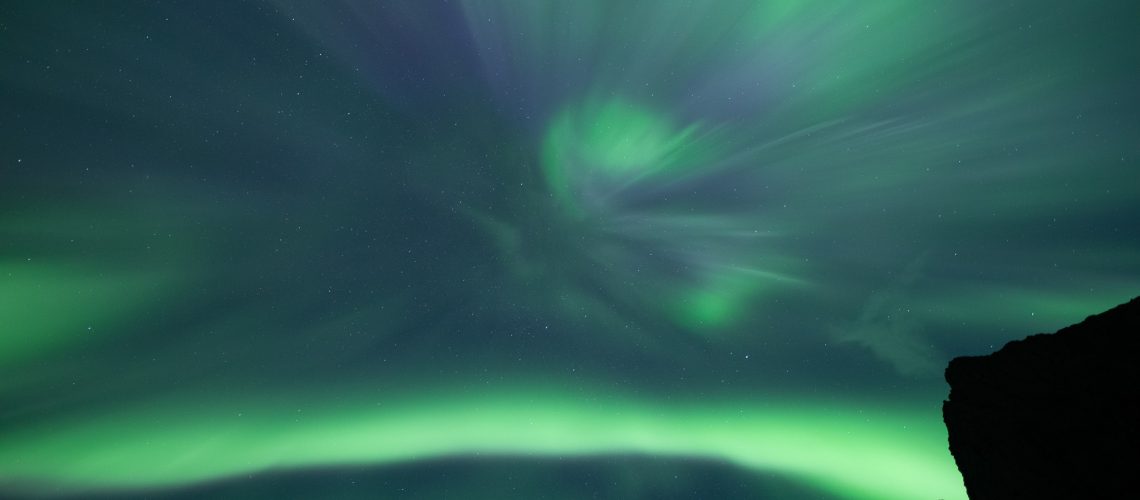From ancient myths to modern science, lady aurora has been bewitching everyone who crosses her path with her inexplicable beauty lighting up both the polar skies and our souls. But what causes these colourful dancing lights in the Arctic sky?
What are the northern lights?
To begin with, the generating force behind the northern lights (aka aurora borealis) is our sun. Imagine the sun as a huge nuclear reactor which produces immense quantities of electrically charged particles later to be expelled out into deep space at a travelling speed of 8 million km/h. This is what we call solar wind. When such expulsion occurs at the sun’s surface facing the Earth, the solar wind reaches our planet after approx. 18 hours. And this is when the Earth’s magnetic field comes into play…
Luckily enough, our planet is equipped with an invisible magnetic shield protecting its fragile beauty from any ‘intruder.’ So, when the solar wind reaches the Earth, the electrically charged particles get deflected by our magnetic field. However, some particles manage to enter through “weak points” in the magnetic field: the geomagnetic poles. The particles enter the atmosphere at approximately 1000-3000 km around the geomagnetic poles. These areas are called aurora ovals and it is where the aurora borealis is generated. More specifically, while traveling along the geomagnetic lines, the solar particles eventually collide with atmospheric particles such as oxygen and nitrogen. This collision releases energy in the form of a photon.
Why are the Northern Lights different colours?
Depending on what particles collide, the photons emitted are of a very specific wavelength:
- Molecules of oxygen glow green (≈80-300 km)
- Molecules of nitrogen glow red-blue/crimson (≈300-500 km)
- Atoms of oxygen glow red (≈500-800 km)
Even though the aurora borealis occurs all year round, its actual visibility is quite dependent on the lack of any other source of light. Largely, this makes it a winter phenomenon, when the Arctic is under the cloak of the long polar nights. In Tromsø, it is no less than two months –from the end of November until the end of January– that not a single part of the sun rises above the horizon. With this period at the very core, Tromsø nights are dark enough to see the northern lights already from mid-September until mid-April.

How about you come and see for yourself one the most extraordinary light shows our planet has to offer? Book now and join us in Tromsø under the Arctic sky!
Written by Nikos Gkikas


